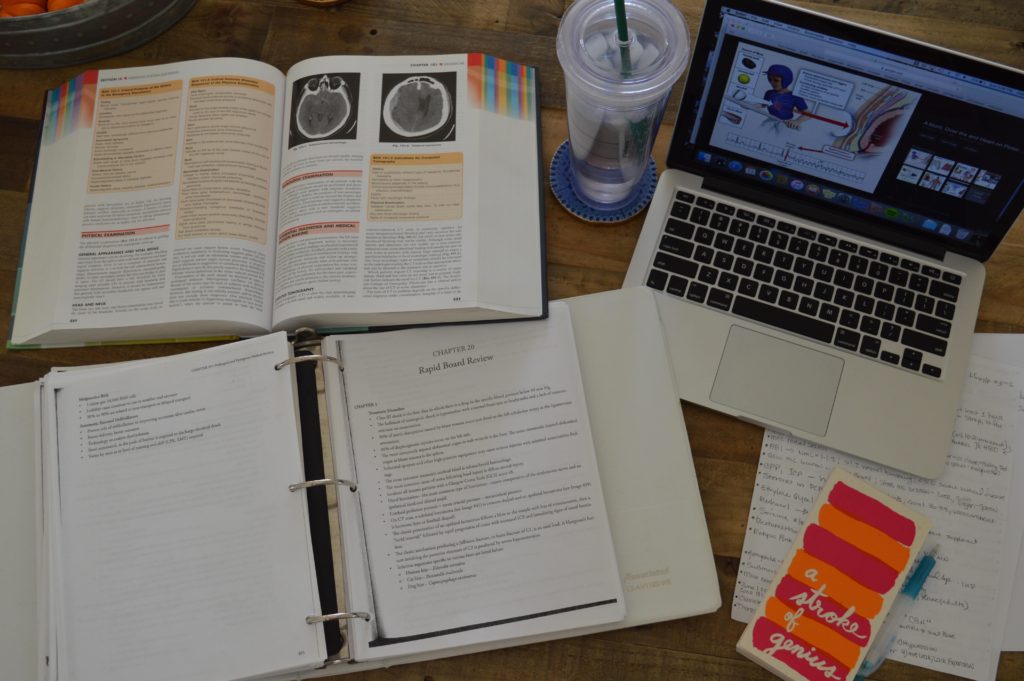
If there is one thing that’s guaranteed with getting into medical school, it’s that you are signing up for many years of test taking. It’s no surprise that with becoming a physician comes board-certifying exams… quite a few of them.
Picture this, you just did well on the MCAT, you made it to medical school! Now you can finally start your professional career in medicine. Oh but wait, we just need you to also pass (and do well) on just a few more exams…
I’m going to discuss the MD path here, since that’s what I’m most familiar with.
STEP 1 USMLE
Let’s start with Step 1 of the Unites States Medical Licensing Exam (USMLE). This is the first step of the licensing exam in the US. It is a single day test, and is typically taken between your 2nd and 3rd years of medical school. The focus is heavy on basic science knowledge applied to medical concepts that is learned throughout the first two years of medical school. Myself, and many of my colleagues, found this test to be the most difficult because it required a ton of memorization. This test included many of the basic and cellular level physiology, microbiology, and pathology concepts. I would describe this test as the most daunting, because of the sheer volume and intricacy of the concepts included on the exam. I studied for this exam with many resources- the First Aid Step 1 book is a typical favorite, but I also used the Goljan pathophysiology book, Goljan podcast lectures, microbiology flash cards, and USMLE World question bank. I had highlighters in every color, wrote and rewrote concepts over and over, until I was blue in the face.
In hindsight, I think I had way too many resources in front of me and it made my studying more difficult. I studied my ass off for this test, pushing 12 hours a day of actual studying and allowed minimal fun in my life. Truth be told, I did well, but my score did not match my time put in studying. I tried a different approach for the Step 2 exam, that I feel worked much better AND was much healthier.
STEP 2 USMLE
Just when you begin to celebrate that you passed Step 1, insert Step 2 here! Typically taken during the 4th year of medical school, this test has TWO parts and focuses more on clinical application of your medical knowledge. The first part is written and encompasses clinical knowledge (CK). This is a single day, 9-hour test. The second part is interactive with patient encounters, called the clinical skills (CS) portion. This part of the test is only offered in certain cities throughout the US, and is formatted to include real (actor) patients with medical complaints in a “doctor office” setting.
I studied for a much shorter period of time this go around. I used minimal resources- First Aid Step 2 and USMLE World question bank. I also allowed myself to have a life, which included more sleep and more fun. I did significantly better on this exam and was much happier. The clinical skills portion didn’t require much preparation, as most US medical schools prep you for this portion with regular simulated patient encounters included in the curriculum. It’s important to get familiar with the format of the exam (as you’ll see is true with any boards exam), but other than that, most US medical students are already prepared for this exam.
STEP 3 USMLE
Wait… I have to go to residency AND take another board exam?
Yes my friends, you do have to take just one more USMLE exam, while balancing a busy resident work schedule, in order to get your medical license in the United States. This test, in my opinion, also requires significantly less preparation (you’re basically a pro test taker now), however the test is TWO days.
Why?? I agonized over the answer to this question while two days of my life were taken from me during this exam. It’s not worth wondering friends 😉 This exam tests several concepts that are required to provide general health care to a patient. This is much more tolerable than the first two USMLE exams because you are doing this on a daily basis in residency.
I took this exam somewhere near end of my first year in residency. I used a question bank with First Aid Step 3, here and there. The real challenge was sitting through 2 days of this test.
Pass these three exams, and congratulations! You have a license to practice medicine in the United States!! That’s it? Not quite…
Specialty specific boards exams
You may have a license to practice medicine in the US, but in order to hold a job; you will need to be board certified. What does that require, you ask? Nothing major, just another boards exam or two. 😉
Every field of medicine has different requirements. Some fields (like Emergency Medicine) require a written portion of the exam as well as an oral portion.
Emergency Medicine Boards
The field of emergency medicine requires passing of an exam with two portions: written and oral.
The first part of this test is taken in November after graduation from residency and includes a single day exam. It focuses specifically on the diagnosis, treatment, and management of the emergency department patient. The written exam must be passed prior to sitting for the oral exam.
The oral portion consists of a single day exam, offered in the spring and fall on multiple dates, located in Chicago, IL. There are seven Emergency Department patient scenarios, each presented by a different examiner face-to-face, with a focus on completing critical actions throughout the case. The entire encounter is simulated and the examiner acts as the patient/nurse/consultant, while the candidate navigates the case, makes a diagnosis, and completes treatment with disposition of the patient.
After passing your specialty specific boards, you can officially call yourself a board-certified physician (in your specialty) AND get to relax for 10 years before your next board recertification exam!!!


